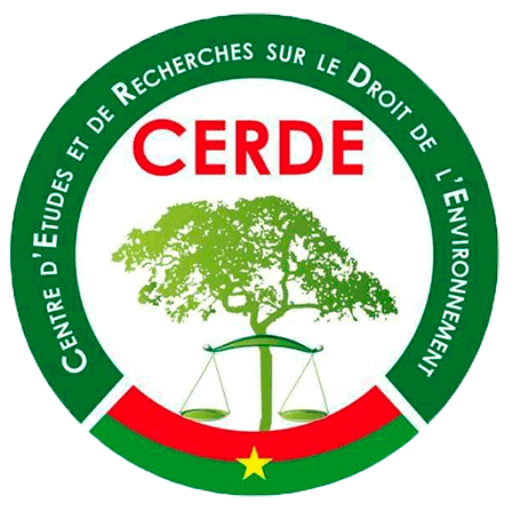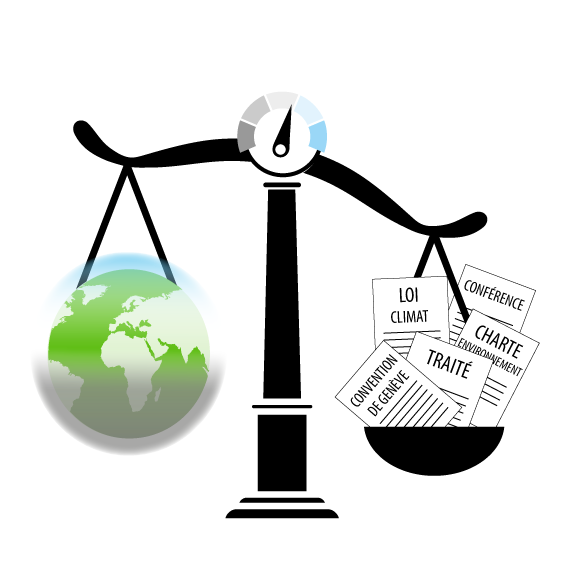INTRODUCTION
Primary responsibility for the safe and secure transport of nuclear and other radioactive materials belonging to different States is the responsibility of the State. Each State must put in place a safety and security regime for transport of nuclear and other radioactive material in accordance with international instruments and the State’s international commitments. However, it should be noted that the development of regulations in the nuclear field and especially on nuclear material and other radioactive material in transport is not an easy exercise. Several difficulties appear in taking into account binding international instruments 1[1], IAEA recommendations and guides 2[2], national nuclear law3 [3] and other relevant regulations. Assistance from Member States in establishing a reliable security regime is needed.
This is why the IAEA’s Division of Nuclear Security has undertaken to meet the challenges of technical assistance to member states through the development of a methodology by different experts. This methodology responds to the complexity of the process of regulating the security of transport of nuclear material and other radioactive material. It is also a tool to help experts in their support missions to member states in the development of their regulations.
This paper presents the methodology developed, challenges and results, provides the results achieved since the start of the process in some countries. The paper also mentions the lessons learned, in particular the involvement of legal and technical experts, but also the need to create an interface and a balance between transport security and transport safety in the development of regulations.
- THE CONSULTANCY MEETING PROCESS TO DEVELOP THE METHODOLOGY TO DEVELOP TRANSPORT REGULATIONS
- CHALLENGES WITH DEVELOPING A TRANSPORT SECURITY REGULATION FOR NUCLEAR AND OTHER RADIOACTIVE MATERIAL
The methodology developed by the IAEA to assist its member states in the development of their regulations on the security of transport of nuclear material and other radioactive material was gradually built up during three consultancy meetings of experts. During these meetings, legal and technical experts looked at the challenges States face in the process of developing regulations on security of transport of nuclear material and other radioactive material.
When considering development of a transport regulation, including security, safety, or both, there are a myriad of factors to consider including the following:
- Adapting the regulation to the national circumstances,
- Defining the scope of the regulation (radioactive material, nuclear material, or both),
- Inclusion and interfacing of potentially new transport security requirements with pre-existing transport safety requirements, and
- Limited human resources.
In a prior paper by Ladsous et al4 [4], the authors go into detail highlighting the complexities in each of these areas. The challenges span understanding the national circumstances, to the material being move in and through the country, to the human factors such as expertise in nuclear law and the institutional capacity of a competent authority to draft a transport security regulation. These factors complicate regulatory development for nuclear security in general but are amplified when endeavoring to draft a transport security regulation.
- DESCRIPTION OF THE METHODOLOGY
The methodology has 12 steps which can be grouped into three phases.
- Phase I : Assessment and initial drafting
Phase I has 5 steps. Before presenting these steps, it should be noted that two cumulative conditions are important for triggering the use of the methodology in the context of assistance to a State. On the one hand, the country requesting assistance must have a nuclear law in place and, on the other, it must submit a request for assistance to the IAEA. These conditions are step 0 of the process.
Step 1 – Legal Inventory: this Step allow to define the legal and regulatory environment. Determine what already exists in the country relating to transport of Nuclear or other radioactive materials but also identify other relevant legal and regulatory documents relating for instance to Inspections Licensing/Authorization Enforcement, Trustworthiness, Dangerous Goods, Regional requirements for the transport of dangerous goods, Information Protection, Threat Assessment, etc. From the perspective of the interface between safety and security, it is during this step that it should be determine if a transport safety regulation for nuclear and other radioactive materials already exists.
Step 2 – National Infrastructure Development Introductory meeting (NIDI meeting). This is an optional step and depends on the needs of the requesting state. It is a kick-off meeting that allows the country to present its legal framework to experts, to put in place the drafting committee or identify and point of contact, identify stakeholders, define the scope of the regulations and establish a rough schedule. It also allows experts to present key concepts and process requirements in accordance with international instruments.
Step 3 – Scope and Structuring the Regulation: This step is crucial because it makes it possible to determine the materials existing in the country (radioactive materials, nuclear materials, uranium ore concentrate); to determine the type of transport existing in the country (domestic, international or transit); to define the modes of transport (road, rail, air, etc.) and regulated activities (use, storage, transport). It is at this stage that the choice of the security approach is made (prescriptive, performance or combined). It is also important to determine at this stage the safety measures to be taken into account in the regulations in order to establish the interface between safety and security.
Step 4 – Initial draft: At this step the initial draft is generated by the draft committee, it is an endogenous activity of the country and should not be carried out by IAEA experts. This draft should be in an official IAEA language in order to allow review by Agency experts. The draft committee should use reference documents such as NSS 13, NSS 14, NSS 9 rev.1, NSS 26-G, relevant national laws and regulations, other relevant international instruments.
Step 5 – Initial Public Notice and Comment: This is a placeholder step depending on Member State administrative procedures for developing regulations.
- Phase II: Review and comment
This phase has 4 steps, it starts with the review of the draft or existing regulations and ended with a final draft version for further clearance at the national level.
Step 6 – IAEA /Expert’s Review: At this step the draft and other related documents (laws and administrative measures) should be transferred to the IAEA to be distributed to the team of experts for review. This is a remote review to see rather the draft’s compliance with IAEA legal instruments. Experts comment and suggest revisions to the draft. Comments are then forwarded to NSNS who sends comments and reviewed regulation back to Member State requesting assistance.
Step 7: Internal Review of Revised Regulation: Upon receipt of comments and the revised draft, the country concerned organizes an internal review of the draft with the designated participants. This step makes it possible to produce a version of the draft ready to be submitted for validation.
Step 8: National Level Workshop on Drafting Transport Security Regulation: This step brings together all relevant stakeholders in the country as well as IAEA experts. IAEA experts present their findings, give examples of their experience, and facilitate discussions. It is important that all stakeholders receive the draft before the day of the workshop in order to allow them to have a constructive participation in the validation workshop. This step makes it possible to finalize the regulation and draft a report identifying further steps to be addressed at the national level.
Step 9: Consolidation: It is an optional step that take place in case the regulation also include other applications like use or storage. In such case a consolidation could be necessary. This activity can be done with IAEA support or facilitation.
- Phase III: Finalization toward publication
This phase is solely the responsibility of the national government as it’s their regulatory process. It has 3 step and ends with the promulgation or publication of the finalized regulation for TransportSecurity. The following steps form this phase: Formatting (Step 10), publication/Promulgation (Step 11) and implementation (Step 12). In the latter case, the requesting State can benefit from training support from the IAEA
Figure 1: Methodology at a glance

- OVERVIEW OF RESULT IN COUNTRIES THAT BENEFITED IAEA SUPPORT
The methodology has been used with several countries: Burkina Faso, Egypt, the Democratic Republic of Congo (DRC), Benin, Ghana, Mali, Senegal, Chad and Cameroon to develop their regulations on the security of transport of nuclear and other radioactive material.
While some countries have opted to regulate only the security of the transport such as Burkina Faso, Benin and Egypt, others have combined safety and security in the same regulations such as Mali, Cameroon, DRC and Chad. There are several reasons for the options taken by the different states. The main reason is the existence or not of previous safety regulations or the will of the country to separate the two aspects in different regulations in order to be more clear. For example, in Burkina Faso, the regulation on transport safety were drafted separately before the process of development of the regulation on security of transport. Other reason is related to the diversity of security requirements and concepts to be mastered by the drafting committee before starting to draft the regulation. Thus, the integration of safety issues can create confusion in notions and concepts, which makes the work of the drafty committee more complex. The last reason concerns financial means. Indeed, combining safety and security requires bringing together a large panel of stakeholders and sometimes the means to finance the meetings are not sometimes sufficient in some countries.
In practice, the combined approach is now the most widely used by countries and the recommended approach by IAEA. It gives a better overview of the regulations and makes it possible to adapt both the security and safety provisions. It also allows for better coordination of the response to a security event.
Indeed, the crucial element remains the proper consideration of safety and security in the regulation of the transport of nuclear and other radioactive materials. How to ensure that security measures do not compromise security needs and vice versa. The support of IAEA experts appears in this context important to clarify the concepts and issues in order to allow countries to decide the scope of the regulations. The results are encouraging and several lessons have been learned.
- LESSONS LEARNED
Several lessons can be learned from this process developed over three years, but in the context of this paper two lessons seem very important in terms of essential factors to the development of integrated, coherent and comprehensive regulations. These concerns first, the involvement of legal and technical experts, and second, the interface between security and safety in the transport of nuclear and other radioactive materials.
- THE INVOLVEMENT OF LEGAL AND TECHNICAL EXPERTS
Developing nuclear security regulations for the transport of nuclear and other radioactive material is the responsibility of the state and can be a complex endeavor. Its complexity is based in the technical requirements for security of material during transport and ensuring that the legal requirements with a given country are satisfied. Drafting transport security regulations requires understanding and legal awareness of multiple areas of a country’s legal regime, including its international obligations, its nuclear law, its administrative law, dangerous goods laws, and other transport security regulations. Insofar that drafting regulations is more an art than a science, drafting transport security regulations requires the support of both technical and legal experts.
Therefore the IAEA identified the need to include legal experts in supporting Member States in developing transport security regulations. The methodology developed to support Members States in drafting transport security regulations through consultancy meetings by both technical and legal experts responds to this need.
The involvement of the two expert profiles must be done from step 1 of phase 1 in accordance with the methodology developed under IAEA. It is preferable that both types of experts participate in the review of the regulatory framework and the definition of scope and the existing materials in the territory of the country. Also, they must all be part of the draft committee. Thus, the legal expert can into account, among other things, the legal considerations such as legal inventory, international instruments and international obligations of the country, the definition of the scope of the future regulation, the national legal culture of drafting regulations. The technical expert will take into account, among other things, the technical consideration such as the type and categorization of existing materials in the country, security and/or safety level and measures. The exchanges between the two make it possible to prepare a draft containing the necessary technical aspects and following the legal approaches and the legal culture of the country while respecting the international instruments and the commitments of the country.
Finally, as much as possible the two experts should participate in all stages of the regulatory development process.
The involvement of legal and technical experts also concerns the way the IAEA operates in its assistance mission. It is recommended that IAEA assistance missions under the methodology include both a legal expert and a technical expert as much as possible.
- THE INCLUSION AND IMPORTANCE INTERFACING TRANSPORT SECURITY WITH TRANSPORT SAFETY
Some Member State competent authorities are responsible for both safety and security of radioactive material in transport and provide national requirements to operators that address both topics. States need to establish national security requirements following a coordinated approach to ensure that security measures do not compromise safety and safety measures do not compromise security. In order to meet this challenge and based on the lessons learned in assisting Member State in developing transport safety and security regulations, the IAEA has published a new publication5 [5] providing technical advice and practical information to Member States, competent authorities and operators based on international good practices, and to facilitate management of the interface between nuclear safety and nuclear security during normal commercial shipments of radioactive material in an integrated and coordinated manner.
This combined approach is important for maintain balance between security and safety measures; have integrated and consistent regulation; clearly identify the responsibilities of the different actors; and predict coordinated response measures to a nuclear event.
SUMMARY AND NEXT STEPS
The methodology developed by the IAEA is a process with appropriate tools designed to support Member States in the development of transport security regulations for nuclear and other radioactive materials. The process and supporting documents developed are meant to empower and enable the Member State to draft regulations that both align to their legal traditions and norms while aligning to international commitments and guidance. Over the last three years, the process has been revised and successfully used by IAEA Members States and there is an increasing number of regulatory drafters including technical and legal experts in different regions. Some Member States need assistance in developing safety and security requirements in a coordinated manner and the recent publication on managing the interface between safety and security of radioactive material in transport provides technical advice and practical information in addressing this challenge. The next step is to update the process in addressing security and safety interface and to involve transport safety experts in the overall process.
Working with both safety and security technical and legal experts, the process developed is meant to be adaptive. While Burkina Faso and other Member States are using this process, it is open to revision and already has areas for update and improvement. Regulatory development is a skill that balances the need to regulate with the need to ensure the regulated understand their responsibilities.
REFERENCES
- Convention on the Physical Protection of Nuclear Material, INFCIRC/274/Rev. 1, IAEA, Vienna (1980); Amendment to the Convention on the Physical Protection of Nuclear Material, GOV/INF/2005/10-GC(49)INF/6, IAEA, Vienna (2005)
- INTERNATIONAL ATOMIC ENERGY AGENCY, Developing Regulations and Associated Administrated Measures for Nuclear Security, IAEA Nuclear Security Series No. 29-G, Implementing Guide, IAEA, Vienna; INTERNATIONAL ATOMIC ENERGY AGENCY, Security in the Transport of Radioactive Material, IAEA Nuclear Security Series No. 9 Rev. 1, Implementing Guide, IAEA, Vienna (in preparation); INTERNATIONAL ATOMIC ENERGY AGENCY, Security of Nuclear Material in Transport, IAEA Nuclear Security Series No. 26-G, Implementing Guide, IAEA, Vienna (2015).
- INTERNATIONAL ATOMIC ENERGY AGENCY, Handbook on nuclear law. No. 621.039: 34 STO. Vienna (2003).
- Ladsous, David, Augustin somda, Jean, Jackson, Gerard, and Fialkoff, Marc. 2019. « Perspectives on Regulatory Design and Development for Transport Security of Nuclear and other Radioactive Materials ». United States. https://www.osti.gov/servlets/purl/1561645.
- INTERNATIONAL ATOMIC ENERGY AGENCY, Regulations for the Safe Transport of Radioactive Material, Safety Requirements, 2018Edition, IAEA Safety Standards Series No. SSR‑6, Rev. 1, IAEA, Vienna (2018).
- INTERNATIONAL ATOMIC ENERGY AGENCY, Managing the interface between safety and security for normal commercial shipments of radioactive material, IAEA Technical Reports Series no. 1001, Vienna (2021).
1 Such as Convention on the Physical Protection of Nuclear Material and its Amendment, Convention on Nuclear Safety, ICSANT, UNSCR 1540 and 1373, Code of Conduct, etc.
2 Such as NSS 9, NSS29-G, SSR6 Rev 1, etc.
3 INTERNATIONAL ATOMIC ENERGY AGENCY, Handbook on nuclear law. No. 621.039: 34 STO. Vienna (2003).
4 Ladsous, David, Augustin somda, Jean, Jackson, Gerard, and Fialkoff, Marc. 2019. « Perspectives on Regulatory Design and Development for Transport Security of Nuclear and other Radioactive Materials ». United States. https://www.osti.gov/servlets/purl/1561645.
5 INTERNATIONAL ATOMIC ENERGY AGENCY, Managing the interface between safety and security for normal commercial shipments of radioactive material, IAEA Technical Reports Series no. 1001, Vienna (2021).



